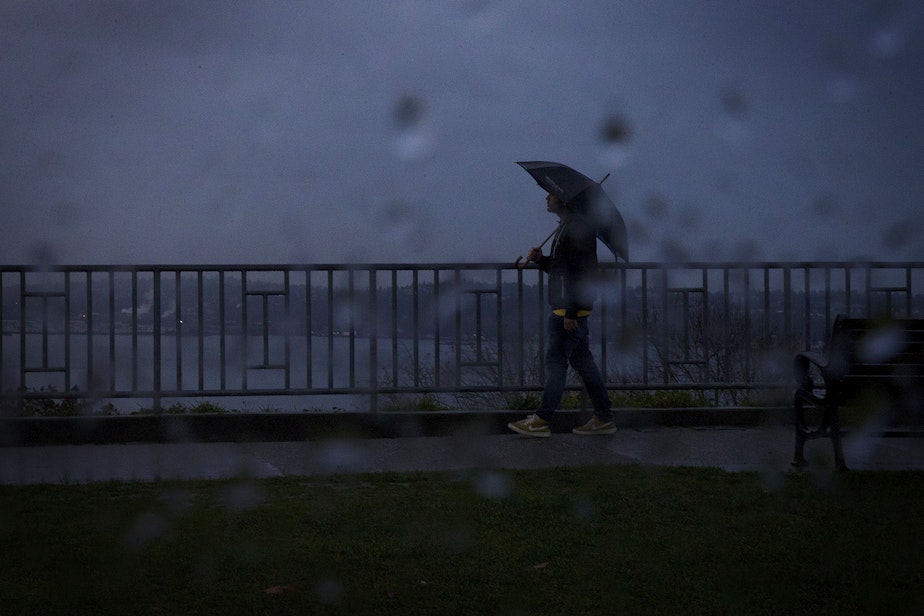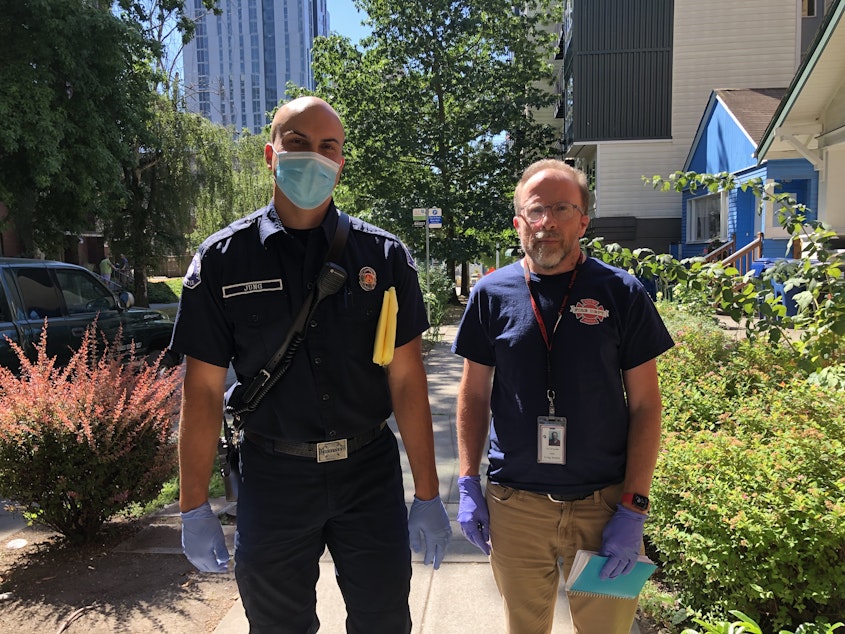The PNW weather ahead: Today So Far

- With a third consecutive La Niña ahead, and a very dry summer behind, what weather should the Northwest expect?
- Love it or hate it, a new airport is coming to Western Washington. But where?
- Can seaweed farms help the Northwest?
This post originally appeared in KUOW's Today So Far newsletter for September 26, 2022.
Take a moment to think about this past year we just had. You could be seeing a lot more of it. Last fall was the second La Niña in a row. We ended up having a wet fall, then a dry-ish winter, then a really wet end-of-winter that led to an extended cold, wet spring. The summer was the driest on record. Despite the recent smoky air, wildfire season was more mild than in previous years (though that could be because it's been pushed further out). You have to admit, it's been a unique trip around the sun. KUOW Climatologist Nick Bond says this could be a sort of "dress rehearsal" for how climate change will affect our region.
“What the climate models are indicating that we are going to have even more of a Mediterranean climate, which is wetter winters and drier summers," Bond said, adding that there are a lot of variables and we shouldn’t expect every year to be like this.
Currently, we are headed into a third consecutive La Niña season (which is rare). What does this mean for the Northwest this fall/winter? Some things we can't know just yet, like exact temperatures. But Bond says that he is expecting a few things: decent snow pack in the mountains; and October through December will bring plenty of rain.
I'm not a meteorologist, or a climatologist, or any title with "ologist" attached to the end of it. But I'm going to bet that winter will be colder than summer (I know, I'm being quite bold). I'm not too good at predicting snowy seasons, but around this time of year, I just think it's good advice to make sure your car has chains and a decent emergency kit with blankets, water, food, a tablet with plenty of Star Trek loaded onto it — you know, the essentials.
Check out KUOW's Angela King's full conversation with Nick Bond here.
One other thing that Bond brought up is that the climate outlook right now, in regard to oceans, is favorable for our Northwest salmon. Personally, I feel our region's waters are an often overlooked resource. They're good for much more than boozing it up on summer flotillas. We could get energy from them, for example. Or the shoreline could offer housing.
Our region's waters could also offer snacks. I'm talking about seaweed. There are aspiring local seaweed farmers aiming to grow sugar kelp. Sure, sugar kelp can be packaged for animal feed or even fertilizer. And there could be positive strides toward addressing methane pollution and ocean acidification. But it can also be cooked up into snacks, healthy snacks at that. Read more here.
You're either going to love the new location for a major airport in Western Washington ... or not. That depends on where the airport is ultimately located. A state commission is charged with finding the location and a decision is expected by June 2023. What we know so far is that it could be one of three options — two sites in Pierce County, and one in Thurston County.
Aside from the air traffic, a new airport is likely to bring major infrastructure upgrades to accommodate the increased traffic on the ground. That means bigger roads, highways, and more mass transit in areas that are currently more rural. That is making some folks wary. Concerns were addressed at a recent virtual meeting about the three options. However you view it, a new airport is coming. The region is growing. Change is inevitable. Read more here.
AS SEEN ON KUOW

Seattle is updating its 911 dispatch to allow new types of call responses. Firefighter Matthew Jung, left, and caseworker Greg Jensen are members of SFD's existing Health One unit which pursues non-emergency calls. (Amy Radil / KUOW)
DID YOU KNOW?
As I mentioned above, there are folks aiming to start more seaweed farms in our region. They are specifically looking to grow sugar kelp. Aside from being quite tasty in salads, rice, or as a puffed-up snack, sugar kelp is also great for removing carbon from the environment.
Kelp farms are being looked at as one tactic to pull carbon from the environment. One estimate I came across states that kelp farms could potentially remove 1 billion to 10 billion tons of carbon each year. Questions remain around how exactly this tactic could work in the big picture, but so far, it seems like kelp farms could be a decent carbon-removing tool. It's at least promising enough for large companies to start looking into kelp farms as a source of carbon credits.
ALSO ON OUR MINDS

Trans religious leaders say scripture should inspire inclusive congregations
"I think that's how we bring heaven to Earth: Having these hard conversations and creating more relationships, and creating more opportunities to be in relationship with difference."

